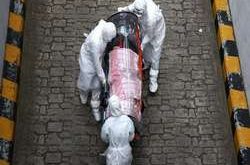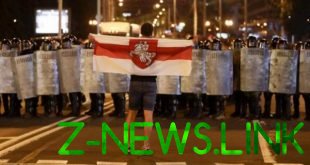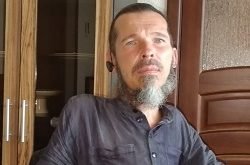

So, friends — today will be an interesting and long-planned a post about the Soviet funeral. As you probably already know — the Soviet government tried to get involved in all areas of people’s private lives, imposing their rituals and traditions, and funerals here, too, were no exception. However, the Soviet funerals, fictional secretaries “on the knee”, root bad and often intermingled with the old, pre-revolutionary traditions.
The second part of this topic — in fact, the attention that the Soviet government has paid funeral of the “leaders”, as if to emphasize their special status and a cult. Especially magnificent was the funeral of Stalin and Brezhnev, and Khrushchev was buried here rather modestly — as it is at the time of his death was already seven years removed from power.
So, today’s post is an interesting story about the funeral in the USSR, about the “races on gun carriages” too, remember) make Sure you check out the article below, write in the comments your opinion, well to friends to add do not forget)
The history of the Soviet rites.

Almost immediately after coming to power in result of revolution of 1917 , the Bolsheviks began to eradicate the old “priests” ceremonies and to go into almost all intimate spheres of human life — from birth to weddings and funerals. In the excellent book “socialist rites”, published in 1986, describes how in the first years of Soviet power was invented and massively implemented “the socialist new rituals” — that was a sort of ersatz religion with faith in the coming of Communism.
Completely replace the old religious rites the Bolsheviks could not — rather, they simply replaced the old rites of their own, dressed up in their little other scenery. So, for example, the funeral service of the deceased in the Church was replaced by a “civil funeral” with the performance of any influential party worker, and the crosses on the graves were replaced with stars. For this case were fitted even a special symbolism — if the Christian cross on the grave had to remind about Christianity and the suffering of Christ for all people, the Soviet star on the grave had to symbolize the “suffering of the fighters of the Revolution” and the late commitment to the ideals of communism.
It’s interesting that the old rituals and all sorts of everyday superstitions as it continued its existence next to the Soviet officialdom. So, for example, a funeral could be held in the “right” of the Soviet-atheistic way, but there was always some grandmother, who told how be mirrors, which place forward the right to carry a dead man out of the house and what should be done immediately after the coffin will make the house. These tips listened even seasoned party members, commenting on it with something like “hell knows, we’ll do it just in case!”, or just silently watching. At least scandals because of “conflict of rites” at the funeral, no one rolled.
Soviet funerals.

The book “socialist ritualism” of the Soviet describes the funeral thus:
“Modern rite “Funeral” was based on torzhestvennaya rituals that have emerged in our society after the victory of the great October socialist revolution, and centuries-old folk traditions. With a view to continuous improvement of the ritual must be tailored to local conditions and the progressive tradition. In the rite, its symbols, music and choral accompaniment may be amended, Supplement. These changes should ensure a high ideological, psychological and emotional effects of ritual on its participants.”
In practice, the “progressive tradition” was a pretty potent mix of rustic superstition (brought to the city yesterday’s peasants), scraps of old pre-revolutionary traditions and “the socialist new rituals” which stick is bad enough.
Soviet funeral in cities in the period 1960-80-ies looked approximately the same. Buried the body most often on the third day is left from Christianity. It’s remained the tradition of the Wake on the ninth day and the fortieth. Usually the house with the body of the deceased was some grandmother-“mourners”, which usually nobody knew — it was quite clear that this is a grandmother, where did they come from and where then left. Most often they were a kind of “funeral Directors” and are commanded, in the corner where the house should stand cover from the sepulchre and how to curtain mirror and all attendants listened with superstitious terror and reverence.
To carry the deceased from home was considered the right legs forward, so that he “never saw the road back” — an old superstition, which is quite a lived in “scientific atheistic Soviet Union”. Because penile size Khrushchev and the microscopic size of the stairs, the coffin is often not able to stand without any problems — often the body and the coffin had to drag separately. The lid of the coffin was waiting at the door entrance, set on two rickety stools.
Almost mandatory in Soviet funeral was the presence of a brass band, composed of randomly wandering alcoholics with a crumpled brass pipes. Orchestra often sounded shrill and out of tune, letting the chatter of cracked plates that moves along the street the funeral procession. Vodka is often started to pour right near the entrance, not waiting for the cemetery. Then the procession moved about 200-300 m till waiting for the coffin of the bus — Soviet hearses in the late Soviet Union served most often a bus PAZ-652, which had a rear opening hatch, which was convenient to push the coffin with the deceased.
Then the coffin carried to the cemetery, where was the same “civil funeral” — it could be some kind of Protocol of the Soviet person and tell about how honest hard worker and a loyal Communist was late, and then everyone was drinking vodka. The tradition of drinking vodka on the graves also appeared in the USSR and remains to this day.
The leaders on the carriages.

In this post we can not say a few words about the funeral in the USSR the first persons of the state — the Soviet government attach great importance in terms of “influencing the masses” and create a kind of cult of the “fathers of the people.”
After Stalin’s death, his body was decided to embalm and put next to Lenin in the mausoleum, and a farewell ceremony was held at the hall of columns. On the same day it was announced the construction of a future Soviet Pantheon — which will have to be buried all future Soviet leaders. At the ceremony of farewell there was a terrible crush in the center Pipe area — the exact number of victims of a stampede are not installed still, the researchers called the average figures in the area of several hundred people.
Khrushchev, deposed in 1964 and died in 1971 was buried quite quietly. But the funeral umertino in 1982 Brezhnev was furnished quite lavishly — farewell was also organized in the hall of columns, the coffin of Secretary General was carried on the gun carriage, the coffin was 44 senior officer and was carried on a set of pads more than 200 awards Brezhnev, which he loved and if the time is not dead — it probably began to hang them on a pants because jacket would not stay place.
There is a legend that the coffin with the body of Leonid Brezhnev in the grave had dropped, and there are two versions of this story — one says that the coffin fell to the bottom of the body of Brezhnev flew in free flight in the grave and the other version claims that a coffin supposedly slipped out of the straps and with a loud thud crashed into the pit causing the walls of the Kremlin stood the huge flock of crows and their cawing drowned out the performance of the Soviet anthem. For current videos of the funeral, nothing like this is seen — but many who watched that day the live broadcast, claim to have seen it with my own eyes, and of the subsequent videos is cut.
Further in the history of the Soviet Union began the so-called “races on gun carriages” — the leaders died like flies one after the other — until 1985, the carriages have time to ride Andropov, Kosygin, Ustinov, and Chernenko. In 1985 came to power Mikhail Gorbachev, and what happened next you already know)
Instead of an epilogue.
In the end I want to say that like the Soviet government did not try to squeeze in all the spheres of human life — it was bad, and the Soviet funeral is one of the examples of this. “The socialist new rituals” did not take root, and the old also hasn’t gone anywhere — giving rise to some strange synthesis of old and new traditions.
Such cases.
Do you remember a funeral in the Soviet Union? Maybe watched a broadcast of the funeral of the Soviet leaders?
Write in the comments, interesting)
© 2019, paradox. All rights reserved.





